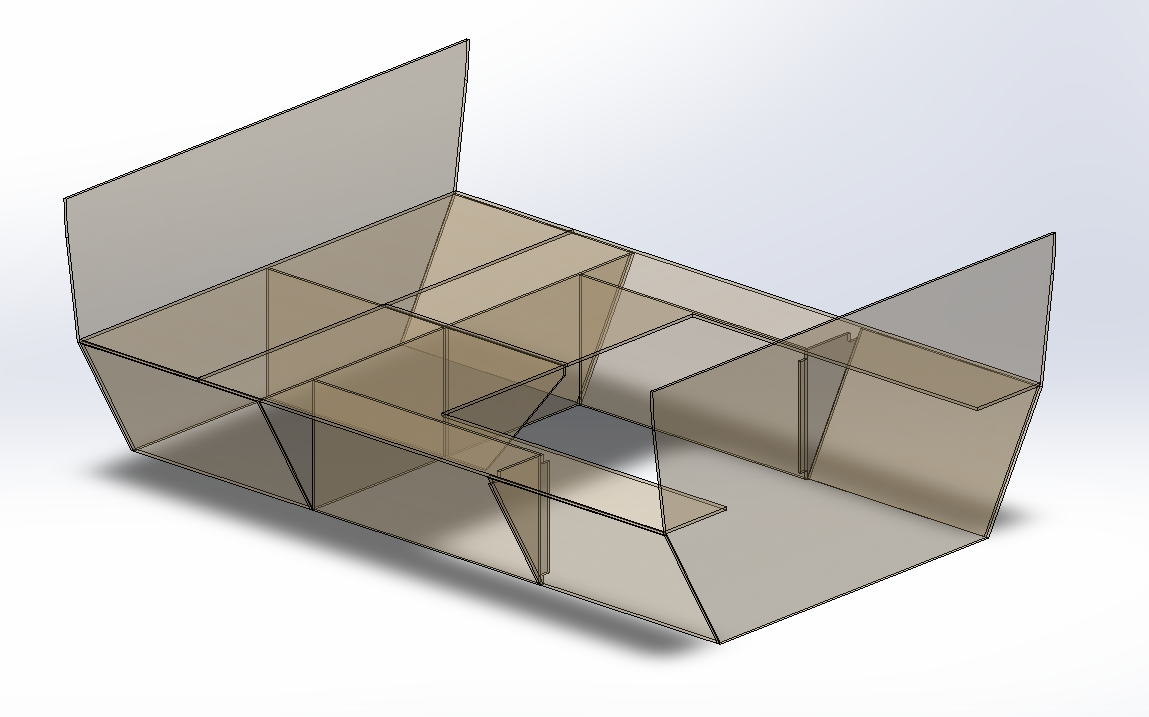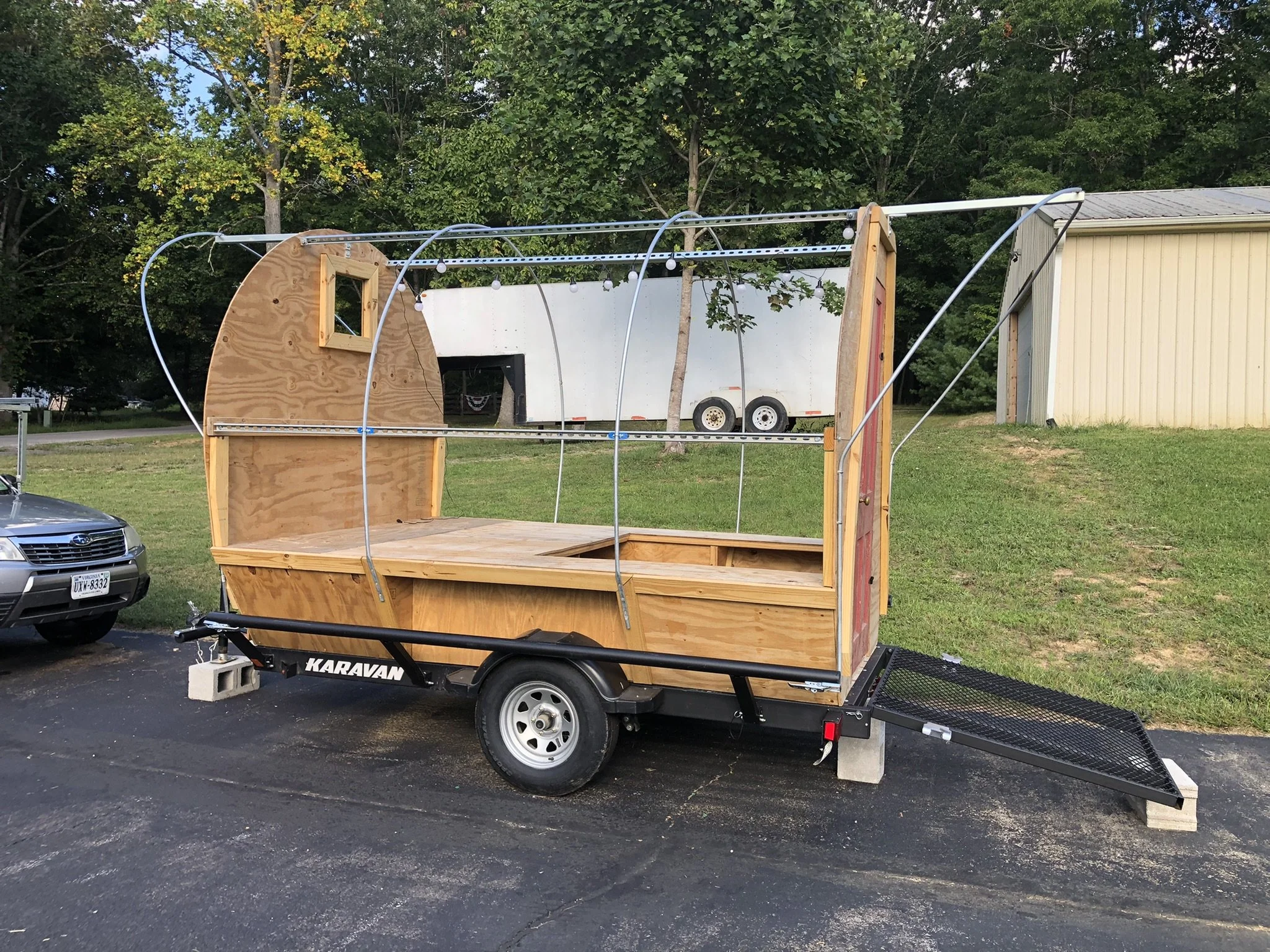Floyd Covered Wagons
Overlanding. It’s a yuppie word for car camping. Look around on youtube or on the suburban streets in a high-income adventure-oriented area and you’ll see tricked out jeeps and custom overlanding rigs galore. Having a 4WD vehicle and your camping gear all set up so that you can go for a weekend off-the-beaten-path adventure at the drop of a hat is a millennial value-signaling status symbol. There is a ridiculous amount of money that some people drop into their camping rigs so that they can go “rough it” with the latest and highest tech backwoods camping accessories.
The overlanders with the deepest pockets and the biggest gear fetishes like to either buy or construct overlanding trailers. Some of these resemble teardrop campers, but a lot of them consist of a set of storage compartments roughly the volume of a pickup truck bed topped by a conventional roof-rack to which they can mount a roof-rack tent of their choice. These setups can get to be fairly expensive, even if home-built. For a commercially built trailer, retail prices start in the neighborhood of $10k for a cargo trailer with roof tent and about $15k for a teardrop-style camper with some models popular with the off-roading crowd going for as much as $40k.
So what’s a budget overlander to do? Many make their own teardrop-style campers by adding some plywood walls to a Harbor Freight utility trailer as a low-cost, high-effort solution. Many more just go without and dream of some day being able to afford or justify $40k campers that they see on Instagram and YouTube.
Enter the Floyd Covered Wagon: a low-cost, low weight camper shell styled after a covered wagon that can be attached to a common open-deck utility trailer. This can be adapted to several common sizes of utility trailers, but a material costs for a 5x10 ft model with a queen bed could be as low as $1500, not including the trailer upon which the wagon shell sits. If we assume a hypothetical MSRP of $5000 for such a model, it could be a great value proposition for a certain type of customer when paired with a $2500 utility trailer. While we could make a series of generic sized models for fixed-side utility trailers, this type of design lends itself particularly well to Karavan brand utility trailers with their folding sides. Since our product interplays nicely with their special feature, there is a lot of potential for a marketing cross-promotion with the makers or retailers of Karavan trailers.
While the covered wagon is certainly a niche product, and not one that belongs in every garage, the niche could easily be large enough to sustain a small business with an appropriately targeted marketing campaign. Such a marketing campaign should lean heavily on testimonials and reviews from established off-road influencers focusing on the real value, of such a setup as compared to the more expensive options, the machine precision and specially tailored materials that no home-gamer can reasonably access, and on the joy and Americana nostalgia of exploring public lands in your very own modern covered wagon.
Overview
CAD rendering of basic bed and bench geometry
A partially finished proof-of-concept 5x10 wagon
Items Omitted or Needing Improvement from POC
Three-layer Canopy
Inner canopy layer of painter’s canvas
Middle layer of Reflectix-style insulation
outer layer of white polyethylene tarp or similar
Stabilizing/lifting jacks
4 corner jacks both used to help level and stabilize the wagon-trailer assembly while in use, and also to lift the wagon portion clear of the trailer for removal and storage
rear jacks only need to be able to lift the wagon a few inches above the trailer deck, while front jacks will need to lift the wagon portion high enough to clear the wheel arches while maintaining a wide enough footprint that they can entirely miss the trailer rails during the removal process. (note: the trailer rails can be dropped to the fully down position where they rub on the tires for the removal and re-attachment process)
Jacks need a well-designed load path to trailer attachment points so that they can lift the frame of the trailer along with decking, passengers, and cargo when used in a levelling application.
Sloped front and end panels
The POC has too much freedom to parallel in the fore-aft direction due to a lack of effective cross-bracing above the level of the bed in the longitudinal direction.
This can elegantly corrected on the next iteration by angling the front and back panels outward, similar to the lower sides of the wagon, but adding triangular-shaped panels to bring the door, window, and vent features back into plumb. This is effectively the same triangular gusset geometry used around the wheel wells to create a rigid lower structure, but applied to the much taller front and back faces of the structure.
Additionally, plywood kick panels may need to be added at the head and foot of the bed. These would also contribute rigidity in the longitudinal-vertical plane.
Electronics: battery, fuse block, charge controller, and one or more flex solar panel on the outer canopy depending on expected loads.
Design for manufacture



